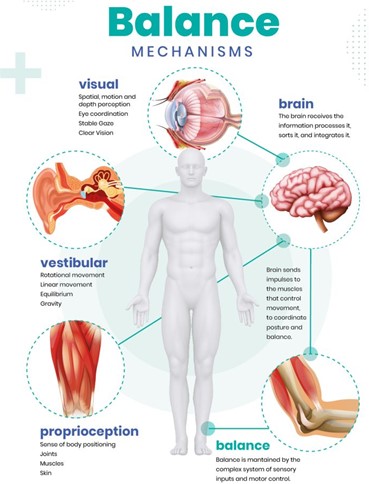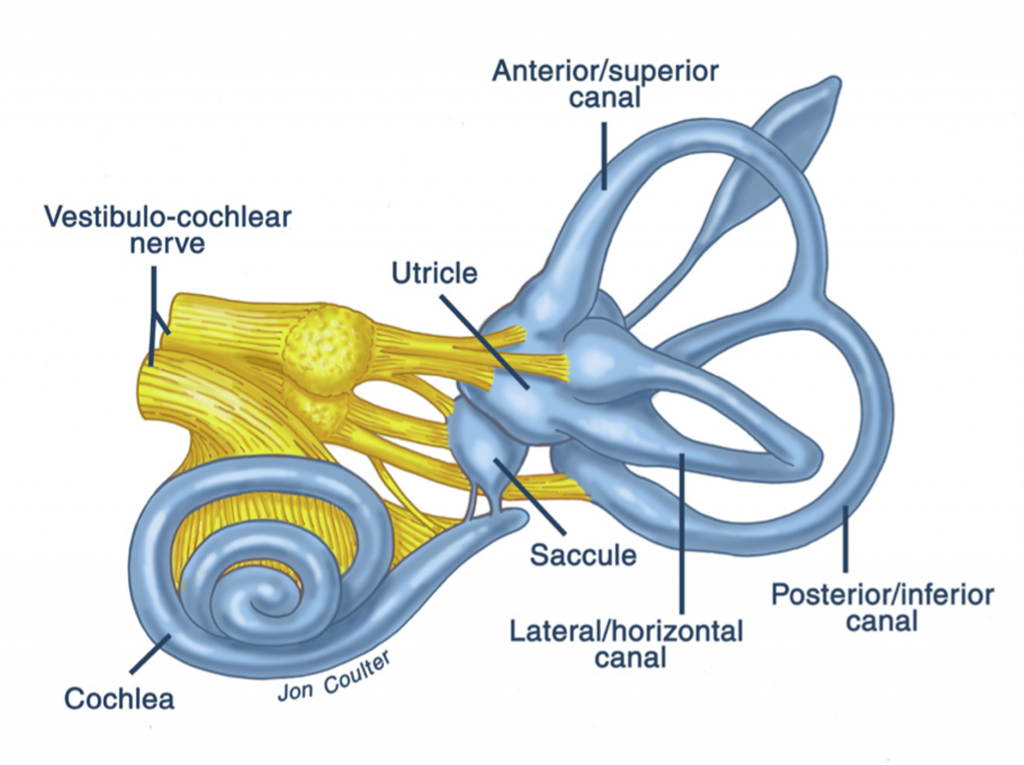HOW DO WE MAINTAIN BALANCE?
NORMAL BALANCE MECHANISM: AN OVERVIEW
Balance is a complex bodily function that allows us to stay upright and navigate through our environment. Understanding the nuances of the balance mechanism is crucial for diagnosing and treating related disorders. This guide aims to explain how the normal balance mechanism operates within the human body.
KEY COMPONENTS INVOLVED IN BALANCE

INNER EAR
Contains the peripheral vestibular system responsible for detecting changes in head position and motion.
EYES
Provide visual cues to help orient the body in space.
PROPRIOCEPTORS
Sensation from touch and vibration receptors located in muscles and joints that provide information about body position.
CENTRAL NERVOUS SYSTEM (BRAIN)
Processes information received from the inner ear, eyes, and proprioceptors to control balance.
VESTIBULAR SYSTEM IN THE INNER EAR
The vestibular system is a key component of the balance mechanism. It consists of three semi-circular canals and two otolith organs (utricle and saccule):

SEMICIRCULAR CANALS
Detect rotational movements.
OTOLITH ORGANS
Sense linear movements and gravitational force.
THE BALANCE PROCESS
DETECTION OF MOVEMENT
Any head or body movement stimulates the vestibular system in the inner ear.
SIGNAL TRANSMISSION
These stimulations are converted into electrical signals and sent to the brain via the vestibular nerve.
INTEGRATION OF INFORMATION
The brain receives signals from the vestibular system, eyes, and proprioceptors and integrates this information to assess the body’s position and motion.
MOTOR RESPONSE
Based on the integrated information, the brain sends commands to muscles to make necessary adjustments to maintain balance and orientation.
FEEDBACK LOOP
This process is continuous, providing real-time updates to the brain to sustain balance during all forms of activity and rest.
BALANCE DISORDERS
Balance disorders encompass various conditions, including benign paroxysmal positional vertigo (BPPV), Meniere’s disease, and vestibular neuritis, affecting the inner ear’s function and causing dizziness and vertigo. Other disorders like labyrinthitis and acoustic neuroma involve the vestibular nerve, leading to balance problems. Additionally, conditions such as postural orthostatic tachycardia syndrome (POTS) can disrupt autonomic nervous system function, impacting balance.
REGAIN STABILITY AND CONFIDENCE IN YOUR LIFE
Do not let balance issues compromise your daily life and well-being. Take a proactive step towards finding solutions by scheduling a consultation with Dr Sandeep Uppal and his team at The ENT Clinic. We offer a holistic approach to address and manage balance issues, helping you regain stability and confidence in your everyday activities. Trust The ENT Clinic to help you find your balance and live life to the fullest.


